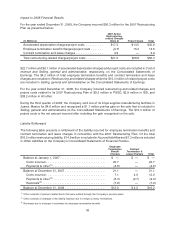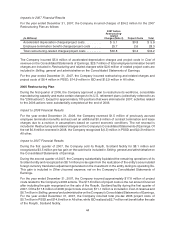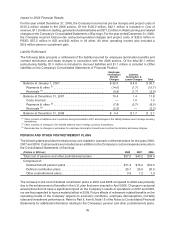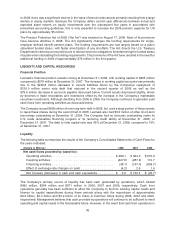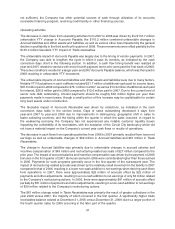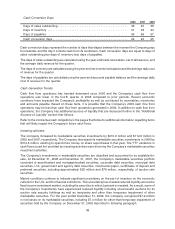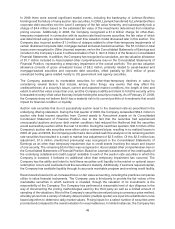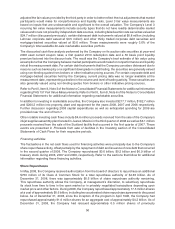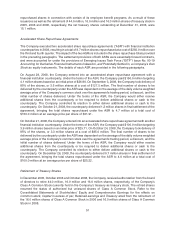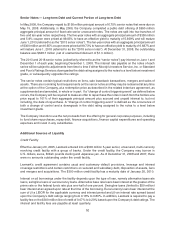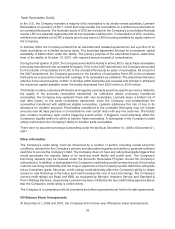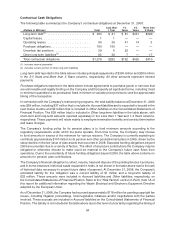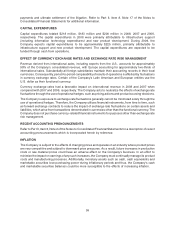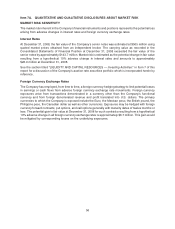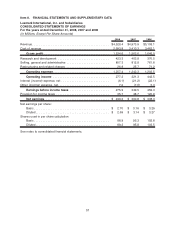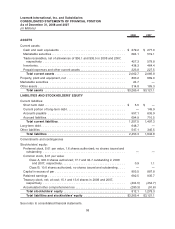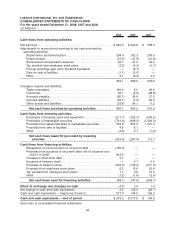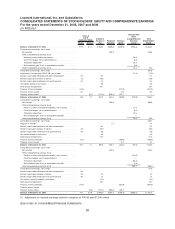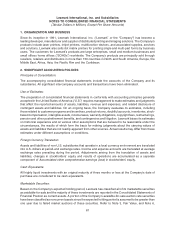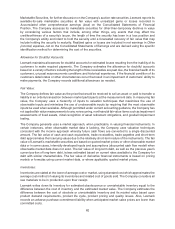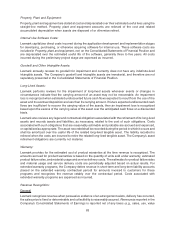Lexmark 2008 Annual Report Download - page 59
Download and view the complete annual report
Please find page 59 of the 2008 Lexmark annual report below. You can navigate through the pages in the report by either clicking on the pages listed below, or by using the keyword search tool below to find specific information within the annual report.Trade Receivables Facility
In the U.S., the Company transfers a majority of its receivables to its wholly-owned subsidiary, Lexmark
Receivables Corporation (“LRC”), which then may transfer the receivables on a limited recourse basis to
an unrelated third party. The financial results of LRC are included in the Company’s consolidated financial
results. LRC is a separate legal entity with its own separate creditors who, in a liquidation of LRC, would be
entitled to be satisfied out of LRC’s assets prior to any value in LRC becoming available for equity claims of
the Company.
In October 2004, the Company entered into an amended and restated agreement to sell a portion of its
trade receivables on a limited recourse basis. The amended agreement allowed for a maximum capital
availability of $200 million under this facility. The primary purpose of the amendment was to extend the
term of the facility to October 16, 2007, with required annual renewal of commitments.
During the first quarter of 2007, the Company amended the facility to allow LRC to repurchase receivables
previously transferred to the unrelated third party. Prior to the 2007 amendment, the Company accounted
for the transfer of receivables from LRC to the unrelated third party as sales of receivables. As a result of
the 2007 amendment, the Company accounts for the transfers of receivables from LRC to the unrelated
third party as a secured borrowing with a pledge of its receivables as collateral. The amendment became
effective in the second quarter of 2007. In October 2008, the facility was renewed until October 3, 2009 and
the maximum capital available under the facility decreased from $200 million to $100 million.
This facility contains customary affirmative and negative covenants as well as specific provisions related to
the quality of the accounts receivables transferred. As collections reduce previously transferred
receivables, the Company may replenish these with new receivables. Lexmark bears a limited risk of
bad debt losses on the trade receivables transferred, since the Company over-collateralizes the
receivables transferred with additional eligible receivables. Lexmark addresses this risk of loss in its
allowance for doubtful accounts. Receivables transferred to the unrelated third-party may not include
amounts over 90 days past due or concentrations over certain limits with any one customer. The facility
also contains customary cash control triggering events which, if triggered, could adversely affect the
Company’s liquidity and/or its ability to transfer trade receivables. A downgrade in the Company’s credit
rating could reduce the Company’s ability to transfer trade receivables.
There were no secured borrowings outstanding under the facility at December 31, 2008 or December 31,
2007.
Other Information
The Company’s credit rating could be influenced by a number of factors, including overall economic
conditions, demand for the Company’s printers and associated supplies and ability to generate sufficient
cash flow to service the Company’s debt. The Company does not have any rating downgrade triggers that
would accelerate the maturity dates of its revolving credit facility and public debt. The Company’s
borrowing capacity may be reduced under the Accounts Receivable Program should the Company’s
rating decline. In addition, a downgrade in the Company’s credit rating could increase the cost of borrowing
under its revolving credit facility and the coupon payments on the Company’s public debt if the rating falls
below investment grade. Moreover, credit ratings could adversely affect the Company’s ability to obtain
access to new financings in the future and could increase the cost of such borrowings. The Company’s
current credit ratings are Baa2 and BBB, as evaluated by Moody’s Investors Service and Standard &
Poor’s Ratings Services, respectively. Lexmark has been notified by the two credit rating agencies above
that the Company’s credit rating is under review.
The Company is in compliance with all covenants and other requirements set forth in its debt agreements.
Off-Balance Sheet Arrangements
At December 31, 2008 and 2007, the Company did not have any off-balance sheet arrangements.
53


